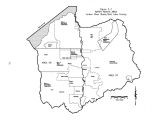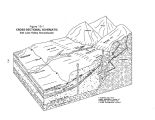| OCR Text |
Show SECTION 5 STATE WATER PLAN - JORDAN RIVER BASIN WATER SUPPLY AND USE Salt Lake County is the most densely populated county in the state and relies heavily on groundwater and surface water sources within the valley as well as imported water to meet the growing demand. 5.1 Introduction This section discusses historical flows, developed water supplies and present water use in the Jordan River Basin. Essentially all of the surface and groundwater sources are fully appropriated and developed. There is, however, a decreasing need for irrigation water and an increasing need for municipal and industrial water. As irrigated lands have gone out of production, the highest quality irrigation supplies have been converted to municipal and industrial uses. Irrigation water supplies that remain are poor quality and will require expensive treatment processes to be converted to M& I uses. Imported water is playing an increasingly important role. The Metropolitan Water District of Salt Lake City ( MWD) and the Salt Lake County Water Conservancy District ( SLCWCD) import water from neighboring counties to the south and east to meet the municipal and industrial demands in the basin. 5.2 Background From the time settlers first came into Salt Lake Valley and diverted local streams onto the land to irrigate their crops, organizations and agencies were established to develop and manage water. Now, nearly 150 years later, a large number of water organizations have evolved which hold water rights, serve a group of users or customers and have a stake in any future water development. These entities represent overlapping and layered jurisdictions which must be considered and incorporated into the water planning process. Rapid population and economic growth along the Wasatch Front ( from Provo on the south to Ogden on the north) is putting considerable pressure on the limited water resources of the region. This heavily urbanized area, roughly 100 miles long and from 10 to 20 miles wide, supports over 75 percent of the approximate two million residents of the state. Within the Jordan River Basin, surface water supplies are already largely developed and water is Mt. Dell Reservoir being imported from outside the basin. A substantial amount of groundwater is also being develop. The Salt Lake Valley groundwater basin is considered over- appropriated, but not yet over- developed. Water agency planners and managers recognize that additional water supplies will undoubtedly be needed at some point in the future. There is some uncertainty as to what extent conservation and recycling measures may delay the development of new water sources, and whether or not arrangements among existing water rights holders can be made to improve the efficient use of existing supplies. 5- 1 |

















































































































































































